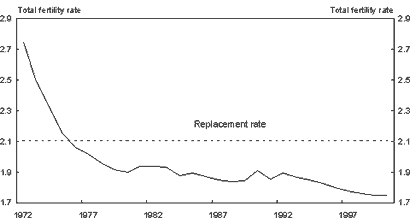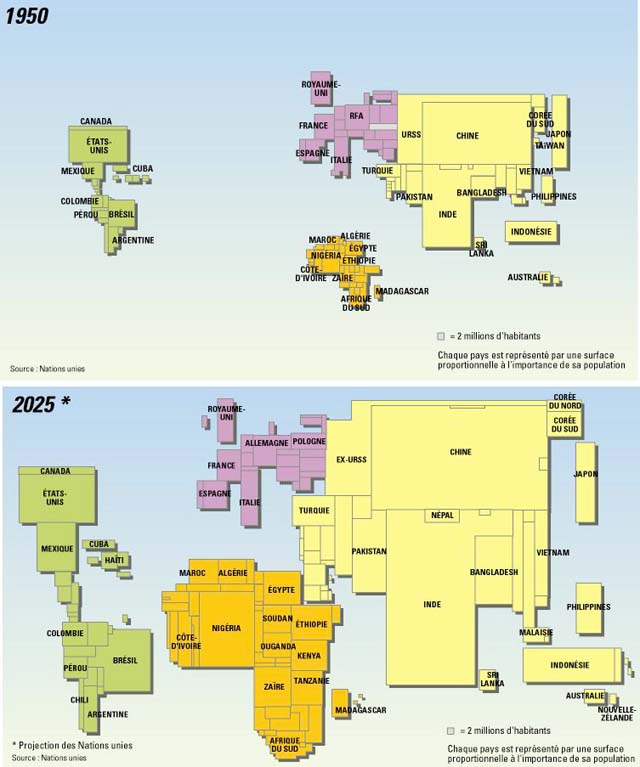China's Demographic realties
 Population growth | Mortality | Fertility
Population growth | Mortality | Fertility
"Successive historic Chinese states
developed a variety of institutions to combat poor harvests, including an
empire-wide system of granaries that annually redistributed up to 5 percent of
the national grain supply during the eighteenth and nineteenth centuries."
p. 45. One Quarter of Humanity, James Z. Lee and Wang Feng, Cambridge, Ma.: Harvard University Press, 1999.

China's population growth from before the common era until now.
"During the last 300 years the world population has increased ten fold."
In 1700 world population was less than 700
million; today it stands at over 6 billion." Now actually over 7 Billion.
"This dramatic increase is the gradual
result of a decline in mortality . . .
"preliminary
research has reconstructed the
population history of virtually all the 1.7 billion Chinese alive since 1950
and .5 million of the 3 billion Chinese
alive in the eighteenth and nineteenth centuries."
pp. 5-6.
"one-fifth of the world population"

Land and water use in China dedicated to growing rice
"Mortality is the first such legacy"
"Excess female infant and child mortality produced the second distinctive feature of the Chinese demographic system: a gender unbalanced marriage market.
"The shortage of marriageable females
was exacerbated by the practice of polygyny."
pp. 7-8.
In the 18th and 19th centuries:
60 percent Europe females 15-50 were married.
90 percent China females 15-50 were married.
p.
8.
TMFR – Total marital fertility rate
Europe China
7.5 - 9 6 children in a completed family.
"This low marital fertility is one of
the most distinctive features of the Chinese demographic system."
Population growth | Mortality | Fertility
![]()
Note that fertility declined faster in China than in the west
p. 8

Years Total Fertility Rate
1970 TFR 6
1995 TFR 2
pp. 8
"In China the process has largely been
continuous,. . . .The Chinese demographic transition
reflects the expansion of the collective decision-making process form the
family to the state."
"demographic
transition in China was the product of several behavioral changes stemming from
a long tradition of demographic planning. For Chinese, planning demographic
events has always
been an important part of life."
pp. 9-10.
"In
China, demographic decisions are never individual."
The most conspicuous example of the
collective nature (character) of Chinese demographic decision-making is the
state family planning program implemented during the past two decades. In the
name of common collective good, the Chinese government has imposed a series of
far-reaching economic and political constraints on individual demographic behavior.
This means one billion fewer Chinese than
would have happened by 2030 without such an intervention.
p. 11
à "deliberate mortality through sex-selective
infanticide and neglect." A demographic characteristic of traditional Chines responses to
economic or famine conditions.
"marital
restraint' was also important"
reducing the number of children in families.
"The preventive check was more
important." in curbing population growth.
p. 12.
Æ Therefore the western Malthusian-influenced model of population development
is not particularly useful for characterizing Chinese population decline's
ethnic peculiarities at the familial and collective levels.
Per capita income was:
China ................................... $ 360
Hong Kong .....................$ 10,320
Population Policy,
"The People's
Republic of China has instituted the most famous program of fertility control,
although the one child policy does not actually explain low fertility in that
country."
"Fertility
began to drop steeply in China as early as the mid-1960s, long before the
one-child policy was established in 1979."
" . . . a significant restructuring of family and gender roles,
particularly among younger people."
"Thus, the motivation for fertility limitation had been
growing, especially within the Han majority, for some time before the
government moved in the direction of more coercive measures."
p. 189.
" . . . in China, the official statistics indicate that
fertility is kept low by the use of the IUD until the family
is completed, at which time voluntary surgical contraception is the norm."
". . . the success of that policy will influence world growth rates for the foreseeable future."
p. 190.
"At the same
time, as the case of China shows, a decline in fertility can be wrapped around a concomitant
decline in mortality; China's leaders clearly understood that 'barefoot doctors
were the indispensable allies of intrauterine devices."
p. 191.
Singapore
• This nation has a large number of people of Chinese extraction and descent; there is some relevance to understanding Chinese population changes in the last century.
"Singapore's
fertility decline has somewhat different roots. Singapore is a city-state that
used to be part of Malaysia, and , and more than three
fourths of its 2.5 million inhabitants are ethnic Chinese."
Government promotion of
"Two is enough" policies with costly penalties, labor disincentives
and tax liabilities on large families, "The impact on fertility was dramatic. . . ."
4.5 TFR
in 1966 fell
1.4 TFR
in 1988
"fertility
is too low, " is the post 1986 ruling government view.
p. 189.
"How to influence Fertility," John R Weeks. pp.
189-190.
in Elephants in the
Volkswagen: Facing Tough Questions About Our Overcrowded Country, Lindsay
Grant.
Population growth | Mortality | China's Fertility
![]()

